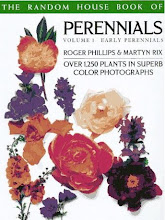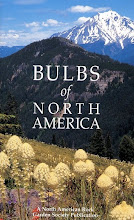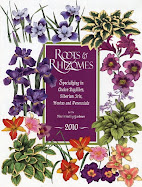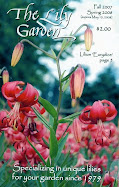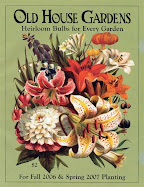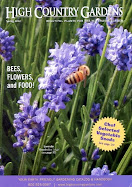Acanthus hungaricus July 2011
Hydrangea quercifolia July 2011
Lobelia tupa & Hypericum 'Hidcote' July 2011
Prunella vulgaris July 2011
Rosa glauca July 2011
Below is a list of plants that began to bloom in my garden in Seattle in July 2011. I recorded the date when the 1st flower opened, not when they were in bud. I think this information is helpful in planning your garden. If you have room for more plants that bloom in July, you can choose something new that will bloom along with something you already have, or you can fill temporal gaps between blooms. Nurseries in Seattle usually sell plants when they are in bloom. I have included dates from previous years. Weather conditions probably account for most of the difference in bloom times. July 2011 was slightly cooler & drier than normal. The average monthly temperature was 64.2F/17.8C. The normal average monthly temperature is 65.3F/18.5C. The highest temperature was 84F/29C, the lowest 49F/9.5C. We had 0.71 inches of rain, 0.08 less than normal. It rained on 10 days. There were 10 cloudy days, 13 partly cloudy days & 8 sunny days.
07-01-11 Aruncus dioicus 6-29-10, 6-16-09, 6-30-08
07-01-11 Lobelia tupa 6-18-10, 6-13-09, 6-22-08
07-02-11 Hemerocallis 'Bela Lugosi'
07-02-11 Hemerocallis 'Hyperion' 6-22-10, 6-12-09, 6-30-08
07-04-11 Callistemon viridiflorus 6-11-10
07-04-11 Gaura lindheimeri 6-27-10, 6-17-09
07-04-11 Sedum reflexum 7-01-10
07-05-11 Lilium pardalinum 6-28-10, 6-21-09, 6-28-08
07-05-11 Scrophularia macrantha
07-05-11 Sedum gypsicola
07-08-11 Hydrangea quercifolia 6-27-10, 6-13-09, 5-25-08
07-08-11 Kniphofia 'Shining Scepter' 6-22-10, 6-23-08
07-08-11 Lilium regale 'Album' 6-26-10, 7-06-08
07-11-11 Clematis viticella 'Kermesina' 7-01-10, 6-24-09, 7-10-08
07-13-11 Callistemon subulatus 7-18-10, 7-06-08
07-13-11 Eryngium variifolium
07-13-11 Hebe recurva 7-01-10
07-15-11 Agapanthus campanulatus 7-09-10, 7-12-08
07-15-11 Anemone x hybrida 7-12-10, 7-12-08
07-15-11 Stachys 'Hidalgo'
07-18-11 Hydrangea arborescens 6-27-10, 6-13-09
07-15-11 Eryngium planum 7-15-10, 7-21-08
07-21-11 Zauschneria californica 7-18-10
07-23-11 Zauschneria latifolia 7-18-10, 7-26-08
07-27-11 Sedum spurium 7-20-10
07-28-11 Lilium 'White Henryi'
07-29-11 Stachys densiflora 'Alba'
07-30-11 Olearia x haastii
07-30-11 Sedum middendorfianum 7-25-10
07-30-11 Sedum selskianum 7-28-10

























































































